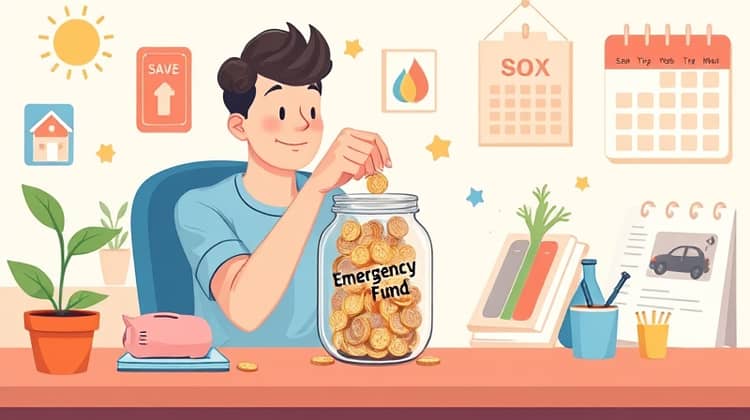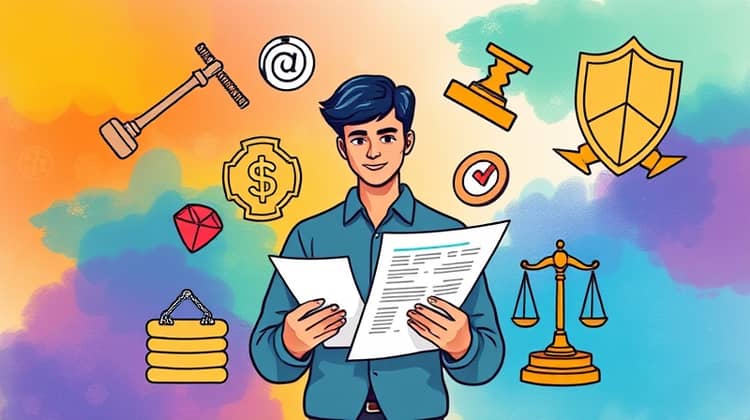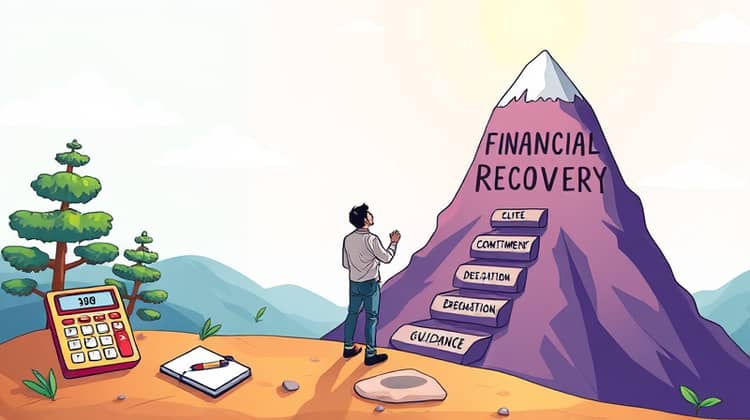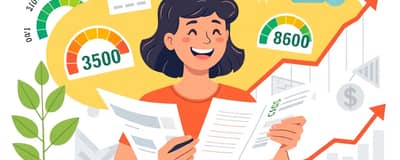Rebuilding Your Financial Future: Managing Credit Post-Bankruptcy

Rebuilding your financial future after declaring bankruptcy can feel like an overwhelming task. However, with the right approach and a clear plan in place, you can regain control of your finances and set yourself up for future success. This article explores essential steps that guide you through the process of managing credit post-bankruptcy, ensuring that you are well-equipped to create a stable and secure financial life.
Understanding the consequences of bankruptcy is crucial as it can have lasting impacts on your credit score, ability to borrow, and overall financial health. The stigma attached to bankruptcy often leads to feelings of shame or despair, but it is essential to approach this situation with a readiness to learn and adapt. You have the power to turn your life around starting from this point.
Let’s dive into the essential steps you need to take to rebuild your financial future, starting with a clear understanding of your current financial standing.
Understanding Bankruptcy and Its Impact

Bankruptcy is a legal process that allows individuals to eliminate or repay their debts under the protection of the bankruptcy court. Many people view bankruptcy as a last resort, often shrouded in negative perceptions and social stigma. However, it can also provide a fresh start, giving individuals the ability to reorganize their finances and regain control over their debts.
The impact of bankruptcy on your credit score is significant. An individual’s credit report will reflect the bankruptcy filing for several years, often resulting in lower credit scores and reduced eligibility for loans and credit cards. This can create hurdles in obtaining new credit; however, it is important to focus on the positive aspects of regaining financial stability instead of dwelling on past mistakes.
Post-bankruptcy, individuals must take conscious steps to mitigate the negative impacts on their credit, make informed decisions, and build a solid financial foundation moving forward. It is not an easy journey, but with determination and the right strategies, it is entirely possible.
1. Assess Your Financial Situation

The first step in the rebuilding process is to take a comprehensive look at your current financial situation. Understanding where you stand will help you make informed decisions moving forward.
- List all sources of income and monthly expenses.
- Evaluate your current credit report to identify outstanding debts and accounts.
- Determine your net worth by calculating assets minus liabilities.
By thoroughly assessing your financial situation, you can create a clear roadmap for your next steps as you work towards rebuilding your credit and securing your financial future.
2. Create a Realistic Budget

Once you have assessed your financial situation, the next step is to create a practical and sustainable budget. A budget serves as a helpful tool for tracking your income and managing your expenses. Establishing this framework can help you escape the cycle of debt and enable you to allocate funds fully towards savings and debt repayment.
When creating your budget, be sure to include all essential expenses such as housing, utilities, and groceries. Allocate some budget towards discretionary spending that allows for easier adherence to your plan over time. By monitoring your budget regularly, you will quickly identify areas for adjustment and enhancement to keep your financial goals in check.
Keeping in mind the challenges in developing a budget post-bankruptcy, consider leveraging budgeting apps or services that help facilitate the process. Engaging with these tools can assist in ensuring that your commitment to budgeting is more manageable and structured.
3. Start an Emergency Fund

An emergency fund is crucial for achieving financial stability and preventing future debt in times of unforeseen challenges. Prioritize setting aside a small amount of money each month into a dedicated savings account designated only for emergencies. This will provide financial security when unexpected expenses, like medical emergencies or car repairs, arise, allowing you to avoid using credit cards or loans involuntarily.
Even saving a modest amount each month will contribute over time and build resilience against potential financial setbacks. It is important to keep your emergency fund separate from other savings accounts to avoid the temptation to dip into it for non-emergency situations.
4. Rebuild Your Credit

Rebuilding your credit after bankruptcy is a systematic process that requires patience and perseverance. The first step includes actively monitoring your credit report to stay aware of your financial standing. Lower credit scores can be daunting, but knowing where you stand allows you to chart a course toward improvement.
One of the best ways to rebuild your credit is by demonstrating responsible financial behavior. Consider the options available for rebuilding your credit, such as making timely payments on bills and maintaining a low credit utilization rate.
- Pay all your bills on time; timely payments account for a significant portion of your credit score.
- Keep your credit utilization below 30%; this means using less than 30% of your total credit limit.
- Limit the number of new accounts you open in a short period.
- Avoid closing old credit accounts; keeping them open can boost your credit history length.
Bear in mind that rebuilding your credit is a gradual process, and progress will take time. Validating your creditworthiness through conscientious practices will ultimately lead to improved financial outcomes.
Secured Credit Cards
Secured credit cards can be an excellent way to rebuild credit after bankruptcy. They require a cash collateral deposit that serves as the credit limit, minimizing the risk for lenders. By using a secured credit card responsibly, you can demonstrate your ability to manage credit, which can lead to future opportunities for unsecured credit.
- Research various secured card options available in the market.
- Choose a card with no annual fee and favorable terms.
- Use the card for small purchases and ensure to make full payments each month to establish positive payment history.
Make sure to monitor your secured credit account diligently, as using it wisely will bolster your credit profile while avoiding any lingering adverse impacts from your bankruptcy filing.
Credit-Builder Loans
Credit-builder loans are another advantageous tool for rebuilding credit after bankruptcy. Unlike traditional loans, credit-builder loans are typically smaller, fixed-amount loans where the funds are held in a bank account until the loan is repaid. These loans help create positive credit history by ensuring timely payments, making it an excellent choice for those looking to rebuild credit following bankruptcy.
5. Manage Your Debts Responsibly

Once your credit is on the mend, it is essential to manage existing debts responsibly. This includes prioritizing which debts to pay down, creating a strategy for repayment, and avoiding taking on more unnecessary debt.
Maintaining transparency about your financial commitments and remaining diligent in your payment efforts assists in sustaining valuable credit standing.
- Consider a debt snowball or debt avalanche method for paying down debts.
- Communicate with creditors to renegotiate terms if needed and seek hardship options when applicable.
- Track your payments and monitor your balances regularly to avoid financial pitfalls.
By effectively managing your debts, you will reinforce the positive changes you’ve made in your financial behavior, aiding in your goal of achieving greater financial stability.
6. Avoid the Traps That Led to Bankruptcy

Avoiding the traps that led to bankruptcy is vital for lasting financial recovery. This involves critically analyzing the patterns of spending that contributed to your previous financial troubles and making a real commitment to breaking those habits. Time is crucial in recognizing the signs of overspending, impulsive buying, or accumulating debts.
Recognizing previous mistakes while remaining committed to learning from them is essential; your past does not have to dictate your future.
- Set financial goals that keep you focused and accountable.
- Limit access to high-risk markets or financial products that could exacerbate your situation.
- Constantly reassess your priorities and remain vigilant against similar trends in your spending behavior.
Taking deliberate steps to avoid these pitfalls will help foster a stable financial future, reducing the risk of facing bankruptcy again.]}},
section_8_1{
headingнетерет™ FinanciaйдииCareer Your Rights
paragraphs_before_list_
paragraphs_after_list
7. Seek Professional Guidance

If you're feeling overwhelmed as you navigate your post-bankruptcy financial journey, seeking professional guidance from credit counselors or financial advisors can be immensely beneficial. These professionals can provide you with the expertise and advice needed to make sound financial decisions moving forward. Aggregating resources available to you, including educational workshops and online courses, can bring additional insights as you rebuild your financial future.
Many non-profit organizations offer free or low-cost financial counseling, focusing on budgeting, credit, and debt management. Engaging with these resources can help simplify processes and equip you with the tools to enhance your financial knowledge and habits.
- Select a reputable financial counselor or advisor with a clear understanding of bankruptcy recovery.
- Inquire about available workshops and support programs that can provide ongoing education about personal finance.
- Maintain open communication with your advisor and set specific financial goals alongside their guidance.
Investing in professional guidance can provide lasting benefits as you take on the journey of reconstructing your financial future post-bankruptcy, effectively laying the foundation for future success.
8. Stay Informed About Your Rights

Remaining informed about your financial rights and protections is essential throughout the bankruptcy recovery process. Understanding the laws relating to credit reporting and debt collection empowers you to make informed decisions, challenge inaccuracies, and express your rights when necessary. It's crucial to know that you have the right to dispute any inaccurate accounts listed on your credit report, potentially leading to score improvements over time.
Bankruptcy laws also grant you protection against debt collectors who may employ abusive practices. Familiarizing yourself with these laws will allow you to recognize when your rights are being infringed upon and give you the tools to handle such situations assertively.
9. Develop Healthy Financial Habits

Developing healthy financial habits is critical in achieving long-term stability and preventing any future financial distress. Building good practices around savings and spending will empower you to take charge of your finances and avoid reverting to negative behaviors.
Establishing a foundation of savvy financial practices can lead to greater financial success over time.
- Set aside a specific percentage of your income each month for savings.
- Review your financial goals regularly, adjusting any targets based on changing circumstances or priorities.
- Practice mindfulness around your spending choices, considering what truly adds value to your life.
By fostering these healthy habits, you will position yourself for enduring success, reinforcing the progress you’ve made in recovering from bankruptcy.
10. Celebrate Small Wins

As you navigate the journey of rebuilding your financial future, it's vital to take a moment to celebrate your small wins along the way. Acknowledging these milestones, no matter how minor they may seem, reinforces positive behavior and provides motivation to continue moving forward.
Recognition and celebration of accomplishments, such as paying off small debts or sticking to your budget for consecutive months, are essential for maintaining motivation and commitment to your financial goals.
Conclusion

Rebuilding your financial future after bankruptcy is a significant but attainable challenge. Through a systematic approach of assessing your situation, budgeting, creating an emergency fund, and responsibly managing credit, you can recover and thrive.
Success on this journey requires commitment and dedication; however, by focusing on actionable steps, avoiding past pitfalls, and seeking guidance, you will gradually create a solid foundation for ongoing financial health and stability.
Remember that rebuilding your financial life takes time, but each visit to your improved credit profile will encourage you to persevere and celebrate your achievements every step of the way.






